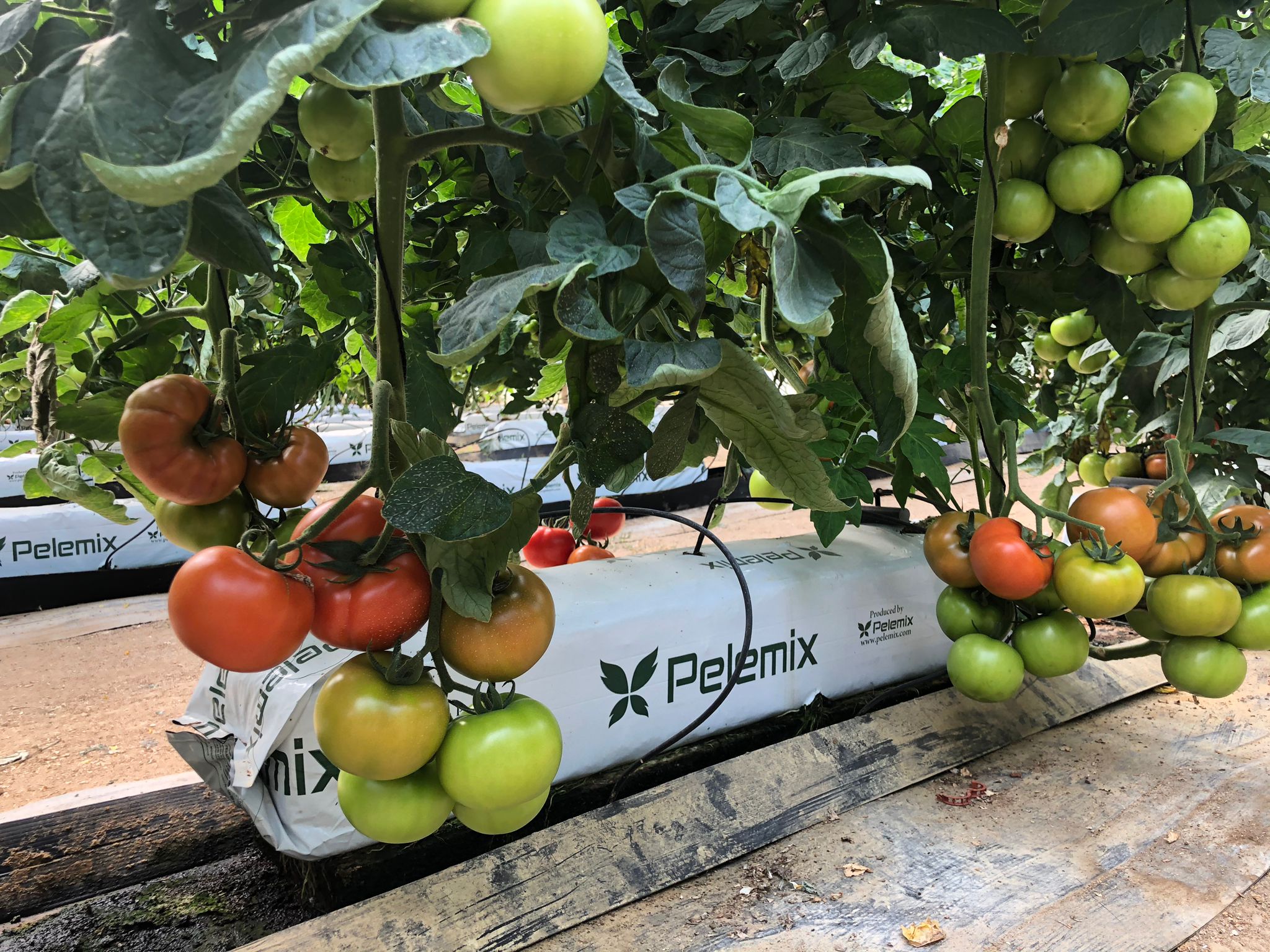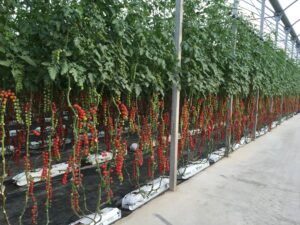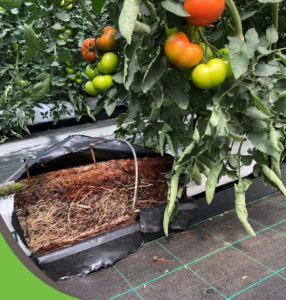Home » 5 MYTHS AND TRUTHS ABOUT COCONUT COIR: THE IDEAL SUBTRATE FOR YOUR CROPS

Coconut has become one of the most popular substrates in modern agriculture, especially in soilless media crops. However, as with any innovation, there are several myths surrounding this material that can generate doubts.
In this article, we debunk some of the most common myths so you can make informed decisions and optimize the growth of your crops.
Myth 1: Coconut coir is not suitable for large-scale crops.
Truth: Coconut coir is ideal for both small crops and large-scale commercial productions.
Coconut coir is an extremely versatile substrate that adapts to different crop sizes. Its light and aerated structure that also able to retain water and nutrient, promoting plant growth. Even in large-scale crops, coconut coir delivers excellent results.
Thanks to its ability to combine retain moisture and provide good drainage, it is ideal for soilless crops of any type, from leafy vegetables to more demanding crops like tomatoes, strawberries, blueberries, and medicinal cannabis, among others.
Additionally, various agronomic studies have shown that fine coconut coir has a water retention capacity of between 50% and 70%, making it perfect for high-demand hydroponic systems(1). the crush structure improves the substrate’s porosity, promoting good drainage, proper aeration in the root system and optimizing nutrient uptake (2).
Myth 2: Coconut coir is not sustainable.
Truth: Coconut coir is a 100% renewable, biodegradable, organic and sustainable resource.
Unlike other mineral substrates such as rock wool or perlite, coconut coir comes from a byproduct of the coconut industry, meaning its production does not deplete natural resources. Additionally, as a natural material, coconut coir has a smaller environmental footprint since it doesn’t require invasive mining processes nor does it negatively impact the ecosystem.
The production of coconut coir consumes significant less energy compared to other substrates like rock wool, which involves more energy-intensive processes with a greater environmental impact(3).
Being biodegradable, coconut fiber contributes to reducing agricultural waste and supports the natural nutrient cycle in the soil.
Myth 3: Coconut coir requires pre-treatment before use
Truth: Quality coconut fiber substrates, such as those from Pelemix, are ready for use without complications.
It is true that in some cases, coconut coir may need a rinse to remove excess salt. However, certified high-quality products like those from Pelemix are already processed and ready for use. This process ensures that the fiber is free of impurities and contaminants, making it easy to implement directly into your crops without the need for additional treatments.
Pelemix substrates can provide as treated with a desalination process that promote Calcium(Ca) and reduces the sodium (Na) and potassium (K) content to levels that prevent the risk of toxicity to plants. This makes the substrate safe and ready for use immediately, without the need for extra rinsing.
Myth 4: Coconut coir does not offer good drainage 
Truth: Coconut fiber has excellent drainage and aeration capacity.
One of the most outstanding features of coconut coir is its ability to provide excellent drainage.
Thanks to its fibrous and crush structure that allow water to flow efficiently, preventing waterlogging and providing oxygen to the roots. This is crucial for preventing problems such as root rot, which can occur in substrates with poor drainage.
With a porosity of over 94%, it provides excellent drainage and aeration. This is due to the structure of its fibers, which create an interstitial space that allows oxygen to reach the roots, promoting healthy plant growth. This feature is especially valuable in soilless systems, where proper oxygenation is essential (4).
Myth 5: Coconut coir is expensive compared to other substrates.
Truth: The initial investment in coconut coir may be higher, but its durability and benefits outweigh the cost.
It is true that coconut coir may have a slightly higher initial cost than other substrates, but its long-term benefits make it a more than worthwhile investment. The durability of coconut coir is superior to that of other materials like perlite or rock wool able to herm the contact with the material(5), reducing the need for constant replacement. With seasonal contamination.
Coconut fiber has a lifespan of up to 5 years compared to perlite, which generally needs to be replaced every 2-3 years. Additionally, coconut coir is much more resistant to decomposition than rock wool, which typically has a useful life of only 1-2 years. Coconut fiber decomposes more slowly, meaning it can be reused for longer without losing its properties. This not only makes it an economically viable option in the long term but also contributes to sustainability since it does not require frequent replacements.
Moreover, the ability of coconut fiber to retain nutrients and water reduces the need for fertilizers and water, which represents additional savings for growers and higher profitability.
Additional benefits of Pelemix coconut coir
At Pelemix, we offer high-quality coconut fiber, ideal for your crops. Our products are made with the highest quality standards, ensuring better water retention, improved aeration, and excellent nutrient retention.
If you’re looking for a sustainable, efficient, and easy-to-use substrate, Pelemix coconut coir is the perfect choice.
Do you have any questions or need more information about our products? Don’t hesitate to contact us! You can easily reach us through our WhatsApp here or in our website https://pelemix.com/product/
Bibliography: